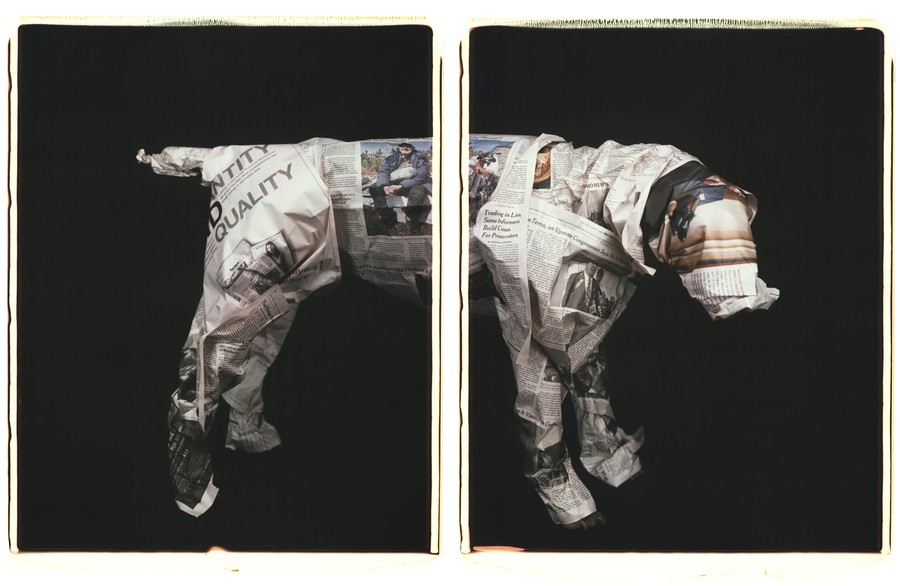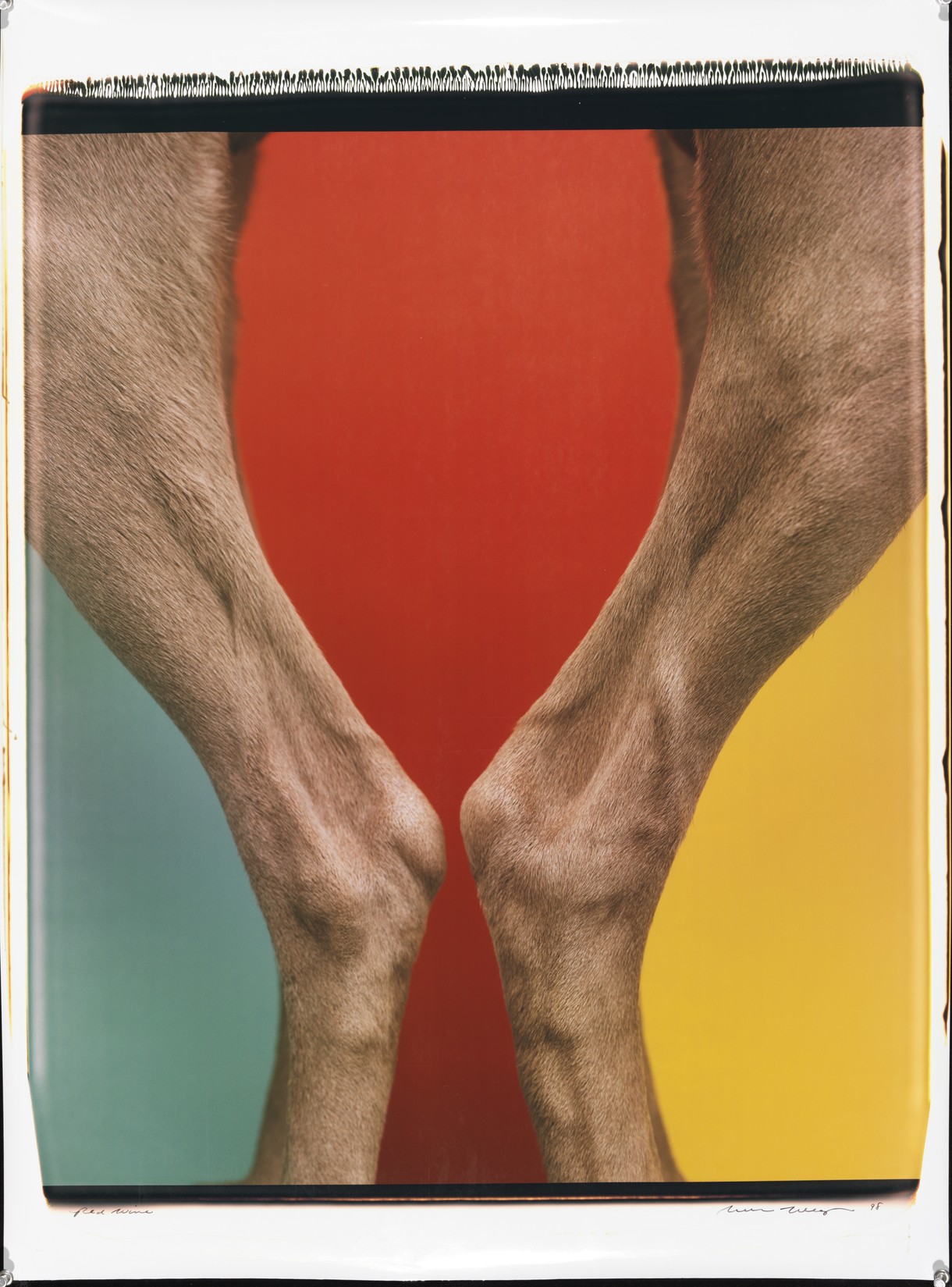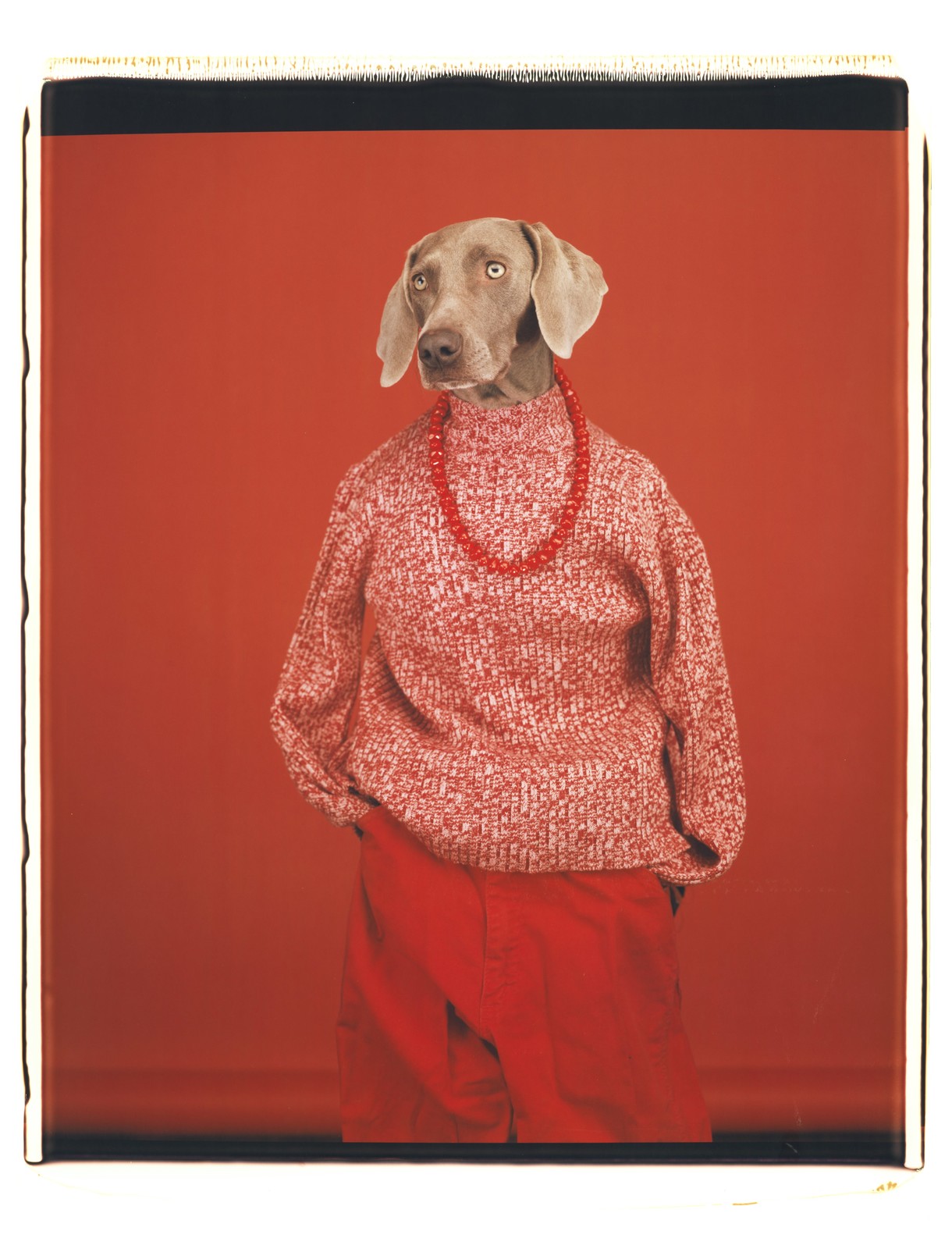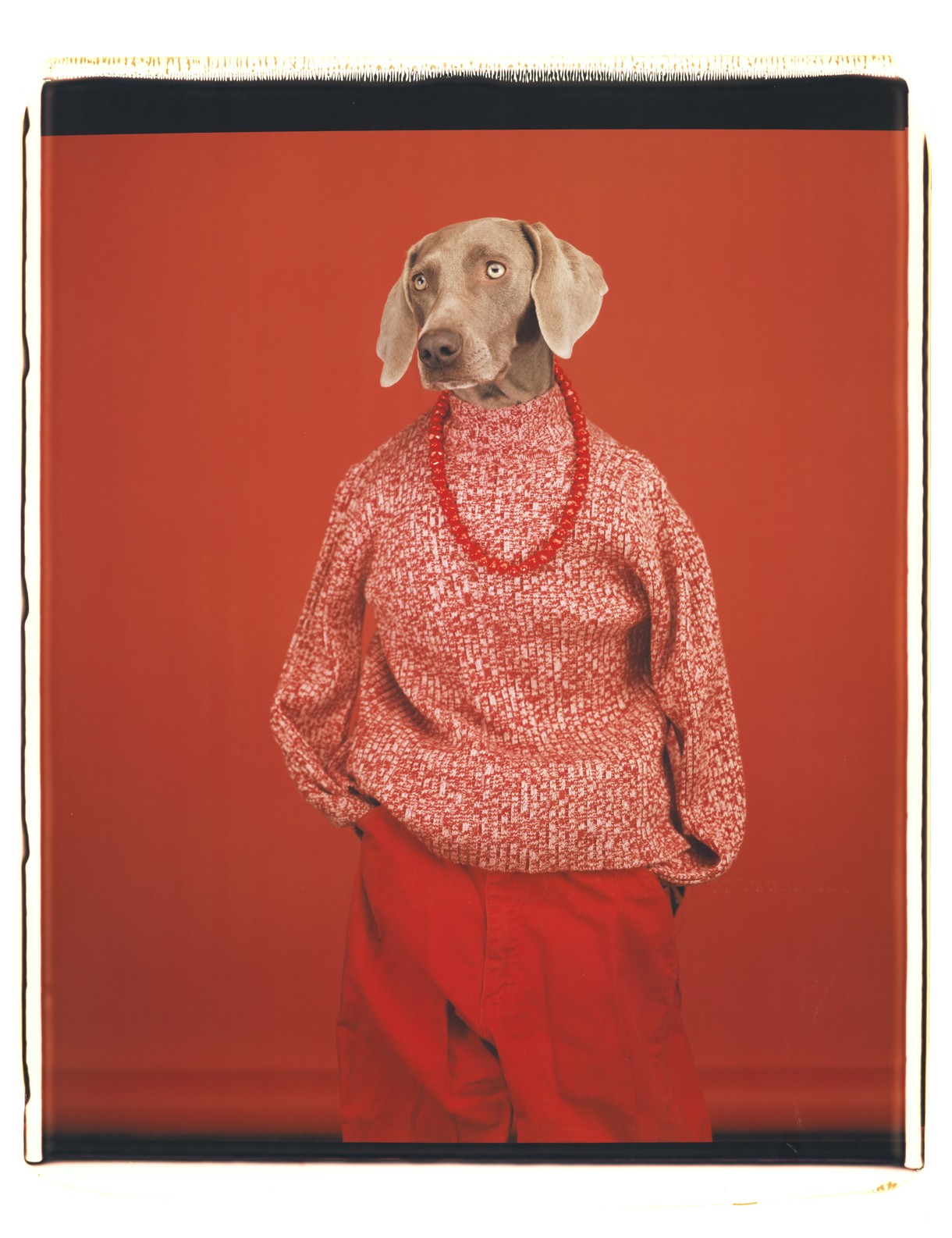William Wegman: Being Human

William Wegman Newsworthy 2004. Colour Polaroid photograph. Courtesy the artist. © William Wegman
It’s a busy time at the Gallery, as we prepare for the opening of William Wegman: Being Human. Wegman is a very significant American artist and this is his first and only show in New Zealand, so we are thrilled to have such a thorough representation of his work on show here at Christchurch Art Gallery Te Puna o Waiwhetū. Wegman, who is famous for working with his Weimaraner dogs, was part of the late 1960s and early 1970s American conceptualist movement, and has produced a huge body of work that examines the human condition through photography and video. Wegman was also one of the earliest artists to see popular culture as a platform for expanding artistic practice and gaining critical attention (he co-produced the hugely influential 1988 re-release music video for New Order’s ‘Blue Monday’ – at the time a record-breaking entry in New Zealand’s charts).
We have a history of working alongside international artists – Ron Mueck, Bridget Riley, Martin Creed and Haines and Hinterding to name just a few. We work closely with the artists on all collaborative projects and develop excellent relationships with them all. Working with Wegman continues this legacy. It is also the first ticketed show we’ve offered since Ron Mueck in the summer of 2010–11, which safely landed between the earthquakes that changed our city forever – this exhibition therefore marks an important milestone as we continue to move our gallery and our collective goals forward.
In this issue of the magazine Hamish Win looks at the tricky subject of anthropomorphism – the attribution of human behaviour onto non-humans – within the context of Wegman’s work. He finds that the artist’s work is less about the depiction of dogs than about how we might expand the ways we think about our connection to non-humans, opening the way for a more open and fluid definition of the human.
Also in this issue, curator Ken Hall looks at the life and work of two supporting characters from his Hidden Light: Early Canterbury and West Coast Photography exhibition – Hokitika photographers John and Alexander Tait. In uncovering the story of the Scottish-born brothers and their evocative photographs, he brings more elements of our colonial history into view.
Head curator Lara Strongman talks with artist Julia Morison about the creation of the works for her new exhibition Headcase, the way that she deliberately imposes limits on herself, and the ten Sephiroth of the Kabbalah. And we look at the recent generous gift made to the Gallery by former head of the School of Fine Arts at the University of Canterbury, Professor John Simpson.
We also pay tribute to Julie King, who died in December 2018. Julie was well known by many at this Gallery and throughout the art world. In her thirty years teaching at the University of Canterbury she pioneered the teaching of New Zealand art in Canterbury. She was also key in the establishment of the Friends of the Robert McDougall Art Gallery during the early 1980s, and became a Patron in 2010. Here, she is remembered by many of her former students and colleagues.
Our pagework comes from young local photographer Mitchell Bright, and our Postcard is from our former director Jenny Harper, free-range in Riga. And our My Favourite is from Gallery visitor host supervisor Janet Abbott, who recalls an encounter with the eponymous sitter of Elizabeth Kelly’s Margaret.













